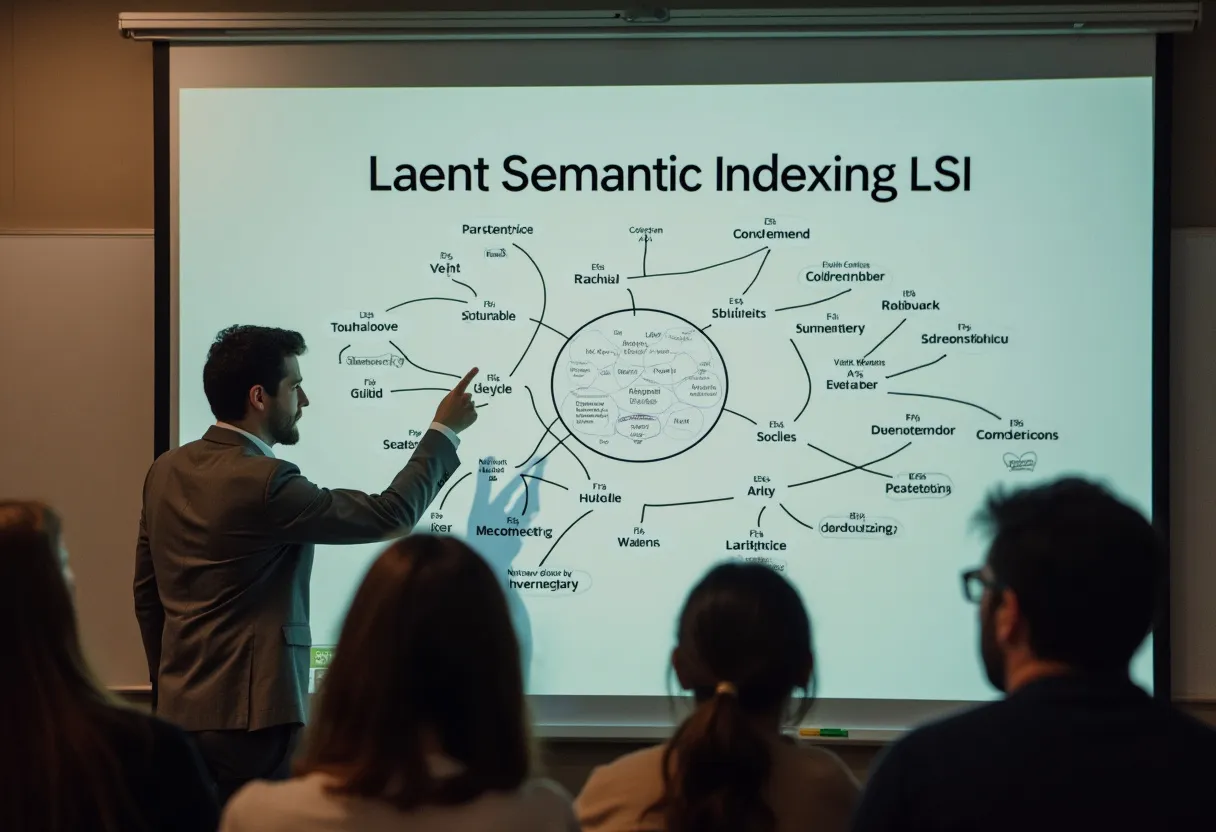Definition
What is Latent Semantic Indexing (LSI)?
Latent Semantic Indexing (LSI) is a mathematical technique used in natural language processing to identify the relationships between words and concepts, helping to understand the overall meaning of a text. It analyzes the co-occurrences of words within large volumes of text to identify related terms and topics.
In the context of SEO, LSI keywords are terms or phrases that are semantically related to the primary keyword, providing context and helping search engines understand the topic and scope of the content.
How It Works
Function and Concept
LSI uses Singular Value Decomposition (SVD) to categorize and retrieve information based on key phrases and ideas. This method involves creating a Term Document Matrix (TDM) to list the frequency of each word in a dataset, and then applying weighing functions to identify meaningful patterns between words.
LSI aims to go beyond simple keyword matching by understanding the semantic relationships between words, such as synonyms and polysemous words (words with multiple meanings).
Although LSI was developed in the 1980s and was not specifically designed for the vast and dynamic dataset of the web, its principles have influenced modern search engine technologies.
Relevance in SEO
Despite Google not using LSI directly, the concept of semantic analysis is crucial. Google’s algorithms use various forms of semantic analysis, such as the Knowledge Graph, Natural Language Processing (NLP), and AI, to understand search intent and the overall topic of a page.
Including semantically related keywords (often referred to as LSI keywords) helps search engines grasp the broader topic, improve content quality, and provide relevance without keyword overuse.
Practical Use Cases
Using LSI keywords can help in developing content that ranks for multiple related terms, improving visibility, and enhancing user experience by providing more relevant search results.
For example, if the primary keyword is “cake recipe,” LSI keywords might include “baking,” “ingredients,” “cooking time,” and “dessert,” which help search engines understand the context and relevance of the content.
Why It Matters
Importance in SEO
Understanding and using semantically related keywords is essential for satisfying search intent and relevance, which are critical components of modern search engine algorithms like Google’s Hummingbird.
This approach helps in reducing irrelevant results and improving the accuracy of search engine results, leading to better user experience and potentially higher rankings.
It also mitigates the risk of Google penalties associated with keyword stuffing by promoting a more natural and contextually rich content strategy.
Impact on Website Performance and Rankings
Incorporating LSI keywords can enhance the quality and relevance of content, making it more likely to rank for multiple related keywords and attract a larger audience.
This strategy aligns with Google’s emphasis on providing high-quality, contextually relevant content that matches user search intent.
Best Practices
Recommended Methods and Tools
Identify Related Keywords
- Use Google’s auto-suggest feature to find related search terms.
- Analyze bold words in SERP results to identify semantically related keywords.
Content Strategy
- Write content that naturally covers search terms related semantically to each other.
- Avoid keyword stuffing; instead, focus on using relevant keyword phrases and variations.
Update and Optimize Content
- Regularly update old content to include semantically related keywords.
- Use tools like SEMrush, Ahrefs, or Surfer SEO to find and analyze semantic keywords.
Tips for Implementation
Natural Integration
Ensure that LSI keywords are integrated naturally into the content to avoid any appearance of keyword manipulation.
Contextual Relevance
Focus on providing context and relevance to the main keyword by using a variety of semantically related terms.
User-Centric Approach
Prioritize user experience by creating content that answers the user’s query comprehensively and contextually.
By following these guidelines, you can effectively use the principles of LSI to enhance your SEO strategy and improve your website’s performance and rankings.
Incorporating concepts like Latent Semantic Analysis (LSA), Latent Semantic Indexing (LSI) Keywords, Natural Language Processing (NLP) SEO, Semantic Content Optimization, Semantic Content Structuring, Semantic Search Optimization, Term Frequency-Inverse Document Frequency (TF-IDF), Topic Layer, Topical Relevance, and User Intent Analysis can significantly boost your internal linking strategies and content’s topical relevance.
Conclusion
Latent Semantic Indexing (LSI) is a key concept in understanding how search engines process and retrieve relevant information. By incorporating semantically related keywords into your content strategy, you increase the chances of satisfying user intent and improving your search engine rankings. Though Google may not use LSI directly, its principles are embedded in modern search algorithms. By focusing on natural integration, contextual relevance, and a user-centric approach, you can enhance the quality and visibility of your content.



